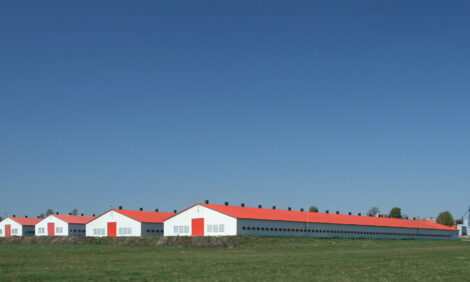



Clostridium perfringens on broiler meat can survive processing, potentially sicken consumers
Most broiler producers know the economic impact of necrotic enteritis caused by Clostridium perfringens, particularly in birds raised without antibiotics.Now researchers in Canada are concerned that if left unchecked, the bacterium in broilers could become a more prevalent cause of food-borne illness in people, Marie-Lou Gaucher, DVM, MSc, PhD, University of Montreal, told Poultry Health Today.
“We tend to forget that Clostridium perfringens is a significant foodborne pathogen,” she said. Over the past few years, and especially in Canada, there appear to be more reports of human illness attributed to C. perfringens, she explained.
While C. perfringens tends to be more prevalent in birds raised without antibiotics, Gaucher said foodborne illnesses in humans attributed to the bacterium could come from many sources and were not necessarily related to this production trend. Future research will explore whether there is a correlation between the increase in these outbreaks and birds raised without antibiotics.
Few studies have investigated poultry’s role or the level of contamination with C. perfringens in retail poultry meat, Gaucher continued, so she and colleagues initiated a study to fill that void. At two poultry processing plants in Quebec, they searched for the presence of the enterotoxin gene, cpe, which is the gene in strains of C. perfringens that can cause illness in people.
Of 379 carcasses from 79 flocks sampled, 25% of flocks, 10% of carcasses and 5% of environmental samples were positive for cpe, Gaucher reported in a presentation about the study presented at the at the 2018 International Poultry Scientific Forum.
Surprise finding
The investigators obtained samples for the CPE gene during five critical steps of processing. Up to 58% of the 38 cpe-positive carcasses and 64% of the 11 cpe-positive positive environmental samples were identified after chilling — a finding Gaucher said was surprising because it’s one of the last processing steps. It also indicates the pathogen could reach consumers. She noted that one of the processing plants had far more positive samples compared to the other.
The research group’s next goal will be to try and figure out how contamination occurs and the corrective measures that might be taken to manage and minimize broiler meat contamination with toxigenic C. perfringens.
In people, toxigenic C. perfringens infection can cause diarrhoea and abdominal cramps that usually lasts less than 24 hours. The very young and elderly may have more severe symptoms that last longer. The pathogen can survive high temperatures. It can grow when food is from 54° F to 140° F (12° C–60° C) and grow very rapidly at temperatures from 109° F to 117° F (43° C–47° C), according to the Centers for Disease Control and Prevention.









